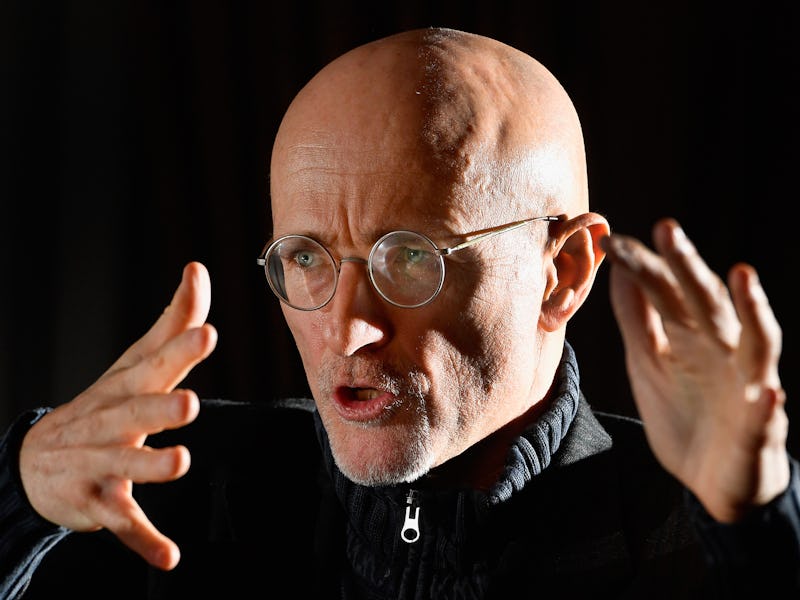Scientist Has Performed a Human Head Transplant, But There's a Catch
"A full head swap between brain dead organ donors is the next stage."

The controversial Italian doctor Sergio Canavero claims he’s successfully performed a human head transplant, demonstrating that the technique is ready for prime time. At a press conference on Friday morning, the Italian neurosurgeon reported that, in an 18-hour surgery, he transplanted a head onto a corpse in China, proving that it’s possible to connect blood vessels, nerves, and the spine. Canavero, the director of the Turin Advanced Neuromodulation Group, has talked a big game for years about his plans to transplant human heads, and he says this latest achievement proves it can be done.
In the Telegraph on Friday, Canavero said that an operation on a living human will happen very soon.
“The first human transplant on human cadavers has been done. A full head swap between brain dead organ donors is the next stage,” he said. “And that is the final step for the formal head transplant for a medical condition which is imminent.”
Sergio Canavero likes to think he's on the margins of the scientific community because he's ahead of his time, like Copernicus, but it's more likely that he is not taken seriously because he's a snake oil salesman.
There’s plenty of reason not to believe Canavero, who has been making these outrageous claims for years, much to the chagrin of the global medical and scientific community. This latest announcement builds on his previous claim, in January 2016, that he’d transplanted a monkey head. Then as now, however, he never provided enough proof to convince the scientific community. When Inverse previously reported on Canavero, reporter Ben Guarino called his goal of transplanting a living human head onto the body of a brain-dead person “not fucking likely,” and this latest announcement does little to adjust our assessment.
The 18-hour surgery took half as long as Canavero previously estimated, which he attributes to time-saving techniques from his team of Chinese colleagues, led by Dr. Xiaoping Ren. Once again, Canavero did not provide evidence of the successful operation, though he did say a paper would be made public in the next few days.
So far, the papers linked to his research that he has managed to publish in peer-reviewed journals include only a handful in Surgery, which were carefully edited to focus specifically on Canavero’s treatments for traumatic spinal cord injury, and a series published in the controversial journal Surgical Neurology International, in which he lays out his idea of “head anastomosis venture” — or HEAVEN, for short.
Subsequent procedures will be performed in China, said Canavero, since the “Americans did not understand.” Canavero, whose work continually pushes the boundaries of medical ethics, seems to envision himself as a modern version of Copernicus or Galileo, someone who is so far ahead of his time that he appears heretical. But it’s more likely that he’s simply selling snake oil.
In 2015, when Canavero first came on the scene, outspoken medical ethicist Arthur Caplan told Forbes that the doctor is out of his mind, and that his goal was unattainable and irresponsible. “It is both rotten scientifically and lousy ethically,” wrote Caplan.
Inverse reported earlier this year that Canavero said he’d be able to thaw cryonically preserved brains in 2018. Now, just as then, Canavero has done nothing to inspire any confidence in his claims.
Nonetheless, he’s found a willing subject in a Russian computer scientist named Valery Spiridonov, who suffers from Werdnig-Hoffman disease, a muscle condition that leaves him wheelchair-bound. Spiridonov’s condition is debilitating, and he deserves a chance at life if he can get one, but this procedure is not likely to give him more than an accelerated and gruesome death.
If Canavero wants to prove himself to the medical community, he should make incremental advances, like connecting nerves in people with severed spinal cords. But instead, he’s setting his goal at the very peak of what could be achievable, and as such, he’s likely to fall flat.